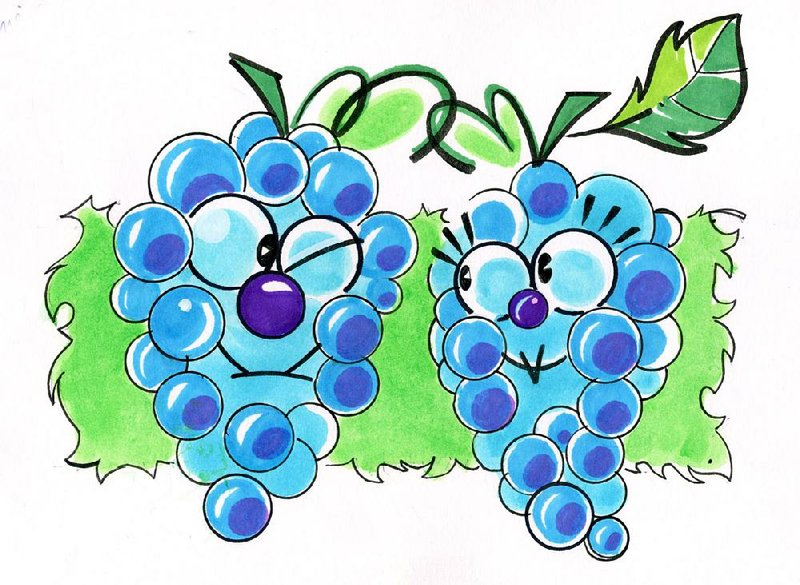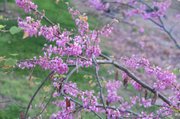Q Some of my best childhood memories are of driving along dirt roads with my grandparents and picking wild muscadines along barbed-wire fencerows and then cooking jelly with my grandmother. My wife and I have recently purchased some wooded property with muscadine vines all over the shaded ground and running up some of the trees. We didn't see any fruit this year. I don't know if these are male plants or females without males nearby. I have seen online self-pollinating muscadines for sale, and they claim these will pollinate nearby vines. What species is/are the native muscadine here in central Arkansas? What do you recommend for increasing production of fruit on the native plants already growing? What variety of muscadine should I get if I purchase plants to aid in pollination, and what do you think of self-pollinating vs. male/female plants? Is there anything we can do to beat any wildlife consumers to the grapes when we get some?
A The wild muscadine is Vitis rotundifolia, but taste and color can vary by plant. In the wild, there are separate female and male plants. The self-fruitful varieties have perfect flowers, with male and female parts together. These self-fruitful types can pollinate your wild plants, provided your wild plants are females. You can order female plants and perfect flowering or self-fruitful plants. If you have room to plant more muscadines in your yard, then plant a variety of types to get a wide range of fruit. If space is limited, plant one of the self-fruitful types. The resulting fruit on the female plants tends to be a tad larger than the fruit on a self-fruitful variety, but they both taste great.
Q I was told you might be able to identify this tree for me. I would like to buy some more.
A That is a great native tree commonly called redbud (Cercis canadensis). There are many varieties to choose from at local nurseries, some having white blooms instead of the pink/purple ones that you have. There are also weeping varieties and some with colorful foliage in dark purple or orange.
Q We received an email from a local nursery that recommended treating all crape myrtles with Bonide Annual Tree & Shrub Insect Control in late April or early May due to the prevalence of crape myrtle bark scale in west Little Rock. It also recommended following up in late summer or early fall with Bonide Systemic Insect Control. Would you share your thoughts and recommendations about this topic?
A I think that is an extreme approach. While we are getting more and more cases of the crape myrtle bark scale, I would not do a preventive program. While the insect can reduce blooming, it is not going to kill a crape myrtle overnight. If you monitor your plants, you can take action if you detect a problem.
Q I would like to compost my grass clippings. How can I kill weed and grass seeds in the clippings?
A Some of the weed and grass seeds will be killed through the composting process by the heat that is generated while things break down. However, a home compost bin never generates heat uniformly enough to totally kill seeds. What goes in, can come out. That is why we don't recommend putting heavily diseased material into a compost pile or many weed seeds. I am sure everyone has seen a unique squash or gourd plant that starts growing out of a compost pile -- same principle applies, the squash seeds weren't killed.
Q You have mentioned annual bluegrass and what to use to control it, but I can't remember. This year has been the worst ever for this weed. Three years ago we weren't bothered with it. What over-the-counter herbicide do I need to use and when should I apply it?
A As you can tell by the name, annual bluegrass is an annual and should be dying soon as the weather warms. It is difficult to achieve complete control of annual bluegrass with a single pre- or post-emergent herbicide application. You may need to use a pre- and a post-emergent product if you have heavy infestation, but it is too late for that this year.
To try to prevent the seeds from germinating, you can use a pre-emergence product such as Specticle (indaziflam), Barricade (prodiamine), Pendulum (pendimethalin) and Dimension (dithiopyr). These would need to be applied on or about Aug. 15 and watered in immediately. Monitor your bermuda or zoysia lawn next fall and early winter, and if you see any weeds emerging, you can use one of the following post-emergent products: Revolver (foramsulfuron), TranXit (rimsulfuron) or Monument (trifloxysulfuron). If you have a bermuda grass lawn, you can use glyphosate (Roundup) while the grass is completely dormant, but glyphosate can only be used on a bermuda grass lawn, not zoysia.
Janet B. Carson is a horticulture specialist for the University of Arkansas Cooperative Extension Service. Write to her at 2301 S. University Ave., Little Rock, Ark. 72204 or email her at
jcarson@arkansasonline.com
HomeStyle on 04/23/2016

